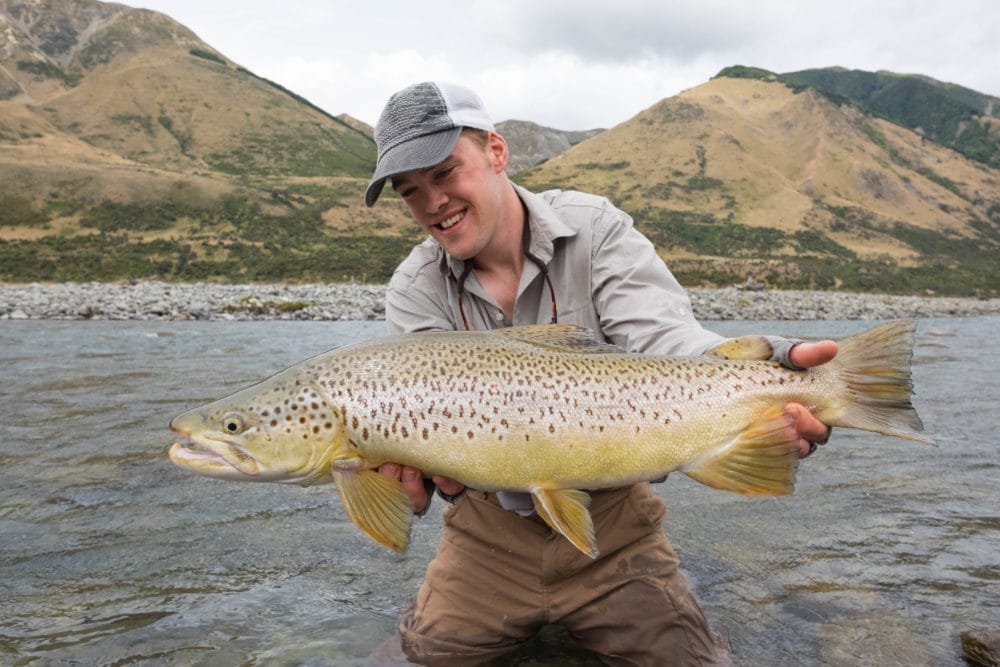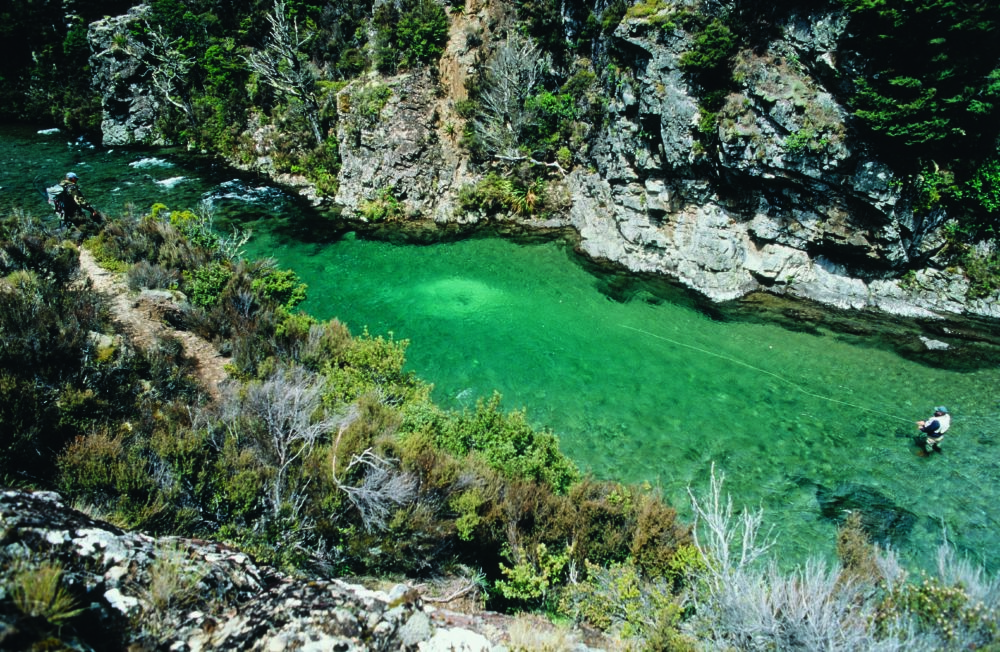Ten Top Tips for Trout Fishing in New Zealand
As this time of year starts to come around my thoughts always turn towards heading back to New Zealand in search of gin clear water and large trout.
I can think of no trout fishery quite like it. There are numerous places around the world to catch big trout but few offer the same opportunities that New Zealand does, being able to target large fish with small flies in crystal clear water. New Zealand is well known to have stunning scenery and many of the rivers flow through the best of it.Yes, the fish are large but with this size comes a certain amount of cunning and guile. These are my top ten tips to improve your chances.
Practice your casting before you go
I can think of no guide that wouldn’t advise you to practice your casting before going on a trip. While it is rare that you ever cast any great distance in New Zealand, accuracy is extremely important. Due to the clarity of the water the leaders you use can be up to 18ft in length, casting leaders this long accurately can take some practice. Spending time on the lawn casting to targets at a range of distances between 25ft and 45ft can cut out a lot of frustration when you are on the water.
Listen to the guide
New Zealand is blessed with many fantastic guides who have been fishing their local waters for years. They will have an in depth knowledge of what is fishing best at the time and the best flies and techniques for the area and current conditions. There are quite a few specifics to New Zealand style fishing so listening to your guide will cut out a lot of frustration and wasted time.
Use long leaders
Due to the clarity of the water on most rivers, especially in the South Island your average 9ft tapered leader will not really cut it. A 16ft leader for most nymph and dry fly work is a good starting point. I use a shop bought 9ft 4X tapered leader, add 3ft of 30lb clear maxima to the butt and 4ft or more of fluorocarbon or high quality monofilament to the tip.
Move slowly
If you are fishing some rivers on South Island the density of fish can be quite low, this is especially the case on rivers that hold some of the biggest fish. On a real trophy river you may have to walk hundreds of meters between fish, this means you must move slowly and carefully to make sure you spook as little as possible.
Be a ninja
On spotting a fish creep into position. In order to get the best drag free drift possible try to avoid casting too far. Most of the time I would aim to get within 40ft of the fish I am targeting. To get this close an extremely stealthy and measured approach is needed.
Keep moving
If the water is gin clear and the sun is out it shouldn’t be hard too hard to spot fish. The pool may look fantastic, but if visibility is good and nothing is there keep moving. If you are unsure cover the fishy spots quickly then move on.
Be observant
Before casting to a fish make sure you spend time to observe its behaviour, this will inform you which technique will be best suited to cover that fish. The phrase time in reconnaissance is seldom wasted is rarely more relevant than here.
Make the first shot count
Once you have an idea of what the fish is doing and you have positioned yourself correctly, try to make sure your first cast counts. This will always be your best chance and is why it is important to have a careful and methodical approach so that you are able to give yourself the best opportunity at making a good and accurate first cast.
Be prepared to follow
Once hooked most fish will try their best to find structure to wrap around in a bid to break free. Follow the fish, holding your ground as they peel line from the reel and head into the distance rarely ends in a landed fish. The less line you have between you and the fish the better, hold the rod high so you can guide the line around rocks and obstacles.
Look after the place
New Zealand is without a doubt one of the most wild and stunning places left in the world. Try to be respectful of this, treat the fish and wildlife with care and take and litter home. It sounds cheesy, but take only photos leave only footprints.
For more information on fly fishing in New Zealand please contact Olly Thompson or Alex Jardine or call our office on +44(0)1980 847389.



